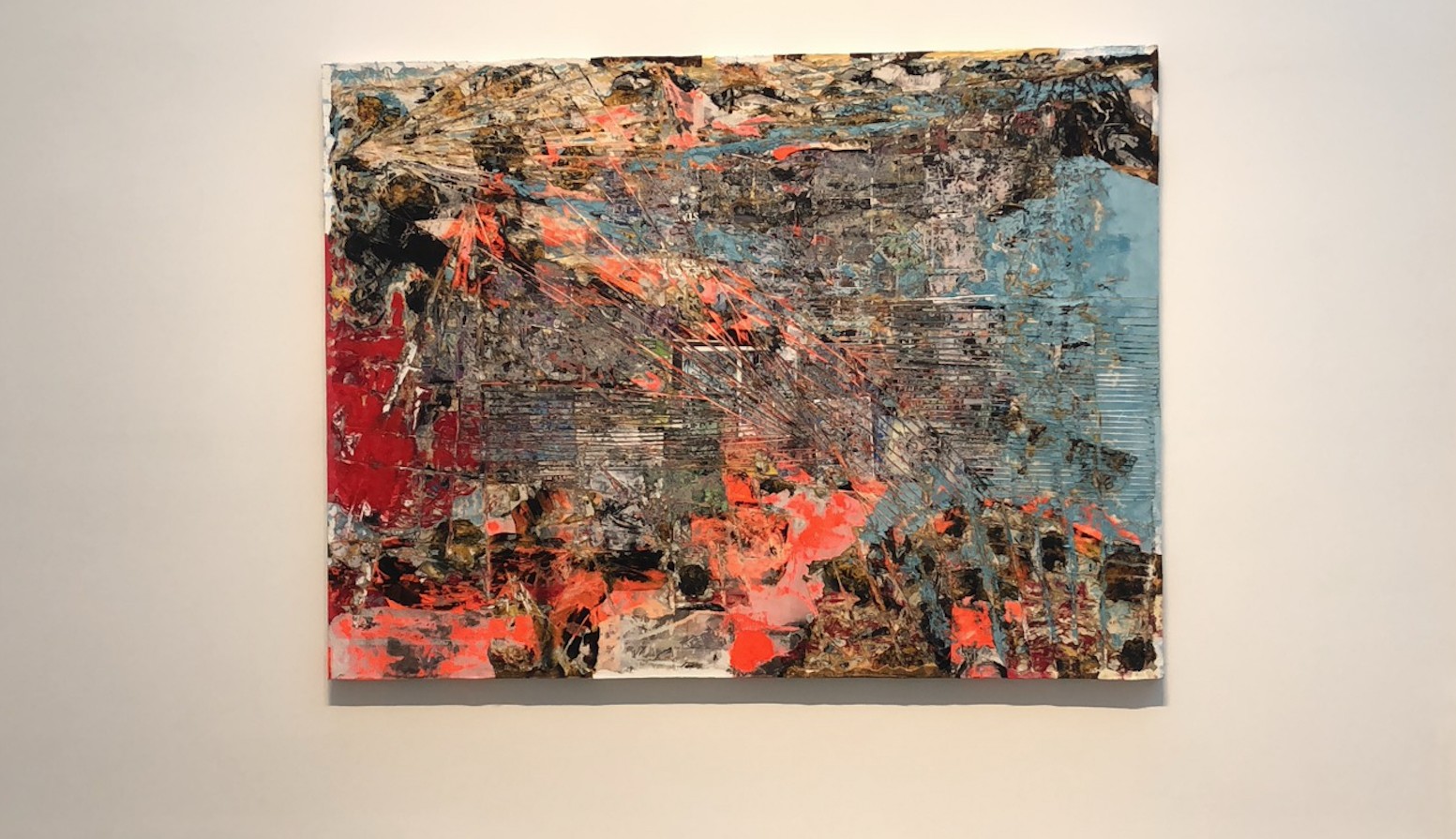Hauser & Wirth debuts three new exhibitions

The Hauser & Wirth Los Angeles gallery recently opened up three new installations: Geta Bratescu’s “The Leaps of Aesop” (top), Mark Bradford’s “New Works” (middle) and Louise Bourgeois’ “The Red Sky” (bottom).
Following a three-week construction period, the Hauser & Wirth Los Angeles gallery in the Arts District unveiled three new exhibits last week: Geta Bratescu’s “The Leaps of Aesop,” Mark Bradford’s “New Works” and Louise Bourgeois’ “The Red Sky.” Though the movements and styles that characterize each artist could not be more disparate, all are considered pioneers in their respective fields, pushing the boundaries of modern art and boasting fruitful and substantive careers.
Bratescu, though lesser-known internationally, is a seminal figure in the Romanian conceptual art movement. Having grown up under a strict Communist regime, her art reflects a spirit of rebellion and irreverence, fittingly personified by none other than the fabled figure of Aesop.
 Bratescu’s varied oeuvre on display in “The Leaps of Aesop” comprises drawings, collages, engravings, textiles and photography, as well as experimental film, videos and performances — testaments to her artistic versatility. The whimsical figures in her “Esop” lithographs, sketched out with loose, fluid strokes, gambol and carouse, seemingly poised to leap right off the parchment. She plays with geometric lines and shapes snipped from construction paper in her “Game of Forms” series, minimalist collages straight out of a Bauhaus scrapbook. “Atelierul,” a video recording of Bratescu engaging in seemingly pointless actions — stepping into a circle of stones, drawing lines along the wall — is actually a radical form of performance art protesting an oppressive totalitarian regime.
Bratescu’s varied oeuvre on display in “The Leaps of Aesop” comprises drawings, collages, engravings, textiles and photography, as well as experimental film, videos and performances — testaments to her artistic versatility. The whimsical figures in her “Esop” lithographs, sketched out with loose, fluid strokes, gambol and carouse, seemingly poised to leap right off the parchment. She plays with geometric lines and shapes snipped from construction paper in her “Game of Forms” series, minimalist collages straight out of a Bauhaus scrapbook. “Atelierul,” a video recording of Bratescu engaging in seemingly pointless actions — stepping into a circle of stones, drawing lines along the wall — is actually a radical form of performance art protesting an oppressive totalitarian regime.
 A Los Angeles native, Bradford’s “New Works” is the artist’s first hometown exhibition in over 15 years. Bradford has become renowned for his incisive examination of culture, race, politics and socioeconomics through the medium of abstract expression, marking him as one of the most influential artists of his generation.
A Los Angeles native, Bradford’s “New Works” is the artist’s first hometown exhibition in over 15 years. Bradford has become renowned for his incisive examination of culture, race, politics and socioeconomics through the medium of abstract expression, marking him as one of the most influential artists of his generation.
The 10 pieces that comprise “New Works” bear Bradford’s signature style; heavily gridded, the criss-crossed lines lacerating his canvases have been forcefully scratched out, creating a primal, animalistic quality. His modus operandi involves collecting windblown sheets of paper from the city streets, then plastering them on top of each other, topped with a splattering of paint. Bradford’s work is evocative of a sprawling landscape as seen from a bird’s eye view, a cartograph carved from paint, shellac and comic book scraps.
Finally, the late French artist Louise Bourgeois is primarily known for her bronze spider sculptures, but the artist also produced a myriad of prints and paintings throughout her prolific career. For Bourgeois, art was a form of catharsis, a means of dissecting down and working through the suffering she experienced at the hands of multiple personal relationships. Viewers of her artwork cannot help but be drawn into her pain and emotional turmoil. Her surrealist, feminist art explores themes of death, memory, trauma, nature and the body.
The works showcased in “The Red Sky” were produced near the end of her life, and, despite Bourgeois’ childish scrawl stamped into the corner of each painting, their thoughtful, somber maturity is evident. Each painting, wrought in red ink, watercolor and pencil, provides an intimate view of Bourgeois’ mindset as she approached her final years. They are highly charged, intense ribbons of red weaving their way across the panels, suggestive of the network of veins, flesh and sinew that make up the body. In “The Red Sky,” fear gives way to nostalgia, innocence to wisdom, fragility to empowerment.
All three exhibits will continue at Hauser & Wirth through May 20.
